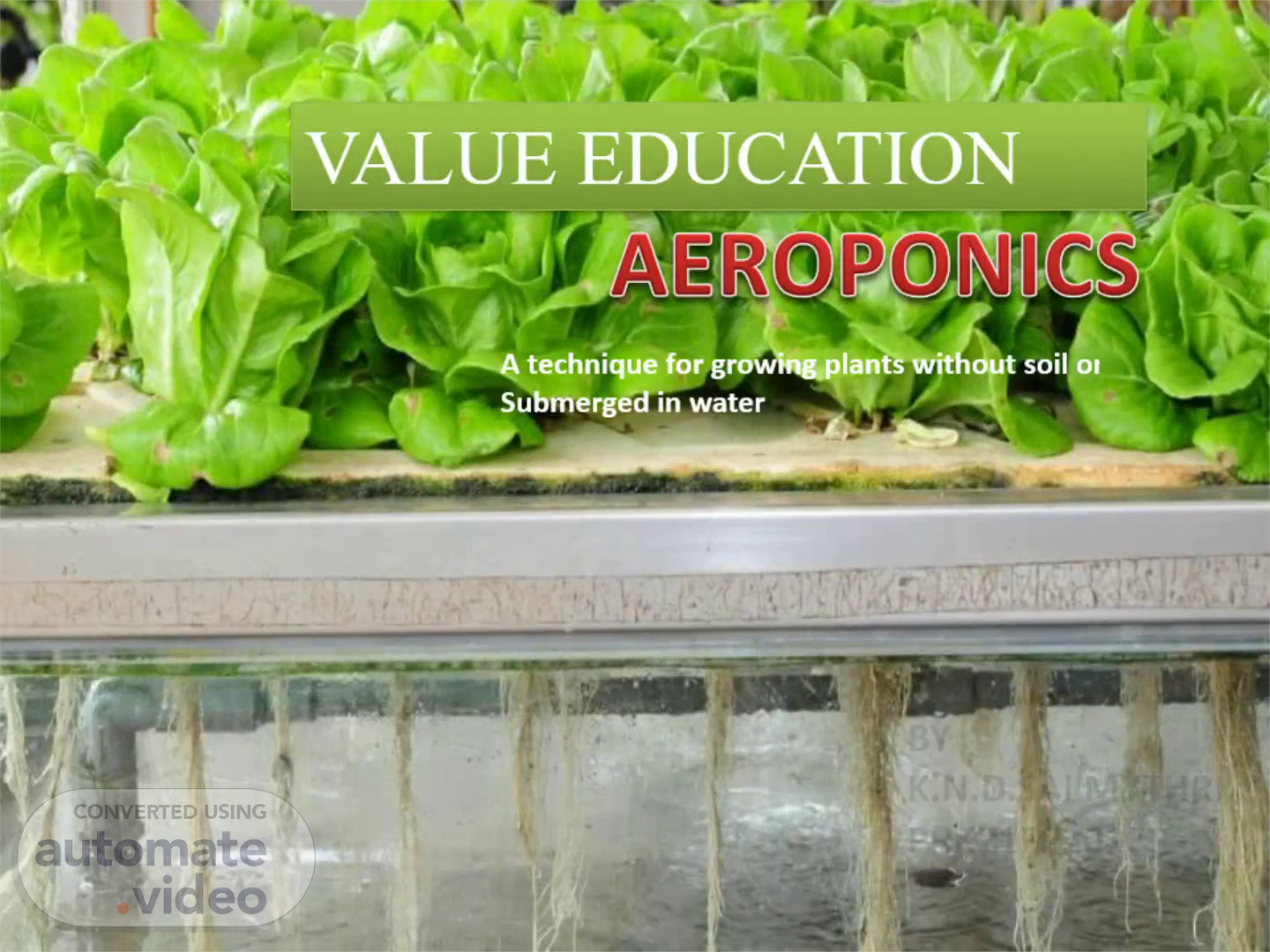Scene 1 (0s)
AEROPONICS. A technique for growing plants without soil or being Submerged in water.
Scene 2 (11s)
1. AEROPONICS. What is Aeroponics? How Aeroponics works? How Aeroponics will be used in the market? Challenges faced in Aeroponics Summary.
Scene 3 (24s)
What is Aeroponics?. The word Aeroponic is Latin which means the “Aero” means “Air”, and “Ponic” means “Culture”. So “Aeroponic” means “AIR CULTURE”. It is the process of growing crops suspended in the air or in a mist without using soil. The roots of the crops sprayed with nutrients with regular intervals. It is a type of high technology farming..
Scene 4 (44s)
How Aeroponic works?. In aeroponics systems, seeds are “planted” in pieces of foam stuffed into tiny pots, which are exposed to light on one end and nutrient mist on the other. The foam also holds the stem and root mass in place as the plants grow. Aeroponics is considered one of the best methods to grow plants in a soil-free environment and the need for this method has been growing due to a clear need for a more convenient way to grow plants..
Scene 5 (1m 11s)
Types of Aeroponic.
Scene 6 (1m 18s)
Advantages of Aeroponics. Crops are grown close together, so more crops can be grown. The crops mature faster, which means there will be more harvests. If a plant is affected with bacteria, removing it will not affect nearby crops. The harvesting of crops simple in this aeroponic system. Use of technology speeds up works and can solve labour shortage problems..
Scene 7 (1m 38s)
How Aeroponics will be used in the market?. The aeroponics market is analyzed across various segments including application, component, and region. On the basis of component, it is categorized into irrigation component, lighting, sensor, climate control, building material, and others. Depending on application, it bifurcated into indoor farming and outdoor farming. The controlled environment of aeroponics has the capability to produce approximately 70% more yield than traditional agriculture. Increase in popularity of organic foods, rise in urban population, and limited arable land for traditional agriculture are the major factors that drive the aeroponics market growth globally. However, requirement of high initial investment to set up an aeroponics farm and technologies used to be in developmental phase restrain the market growth.
Scene 8 (2m 11s)
Aeroponic vegetable farming.
Scene 9 (2m 17s)
Aeroponic Rice harvesting.
Scene 10 (2m 25s)
Aeroponic vertical farming.
Scene 11 (2m 32s)
Challenges faced in Aeroponics. The profit made by farms all depend on how much crop is produced, so if a machinery malfunctions, and a large crop destroyed, there is a chance the farm will face a loss. Machinery must be carefully inspected everyday to make sure the machinery works properly. Clogged nozzles are one of the most common problems in aeroponics, but it's solved by simply cleaning filters, pumps, tubes, and fillings..
Scene 12 (2m 53s)
Environment impact. Aeroponic growing safe and ecologically friendly and also produces natural, organic and healthy crops Aeroponics is ecologically friendly because of the conservation of water and energy. When compared to hydroponics,aeroponics requires less water and uses less energy inputs per sq meter of growing area..
Scene 13 (3m 10s)
Summary. Aeroponic growing allows plants and crops to grow without the use of pesticide and thus it will be disease free. The crops will grow in a natural healthy manner as the aeroponic system is very similar to nature environmental conditions. As aeroponics is conducted in air combined with micro-droplets of water, almost any plant can grow to maturity in air with a plentiful supply of carbon-dioxide, water and nutrients. Furthermore, aeroponics helps conserve water, land and nutrients, so the aeroponics system is the way of the future, making cultivation of crops easier.
Scene 14 (3m 36s)
drip gardemng fruit nutrition lightv controlled weed å *hydroponics blooming vegetables seedling waste eco —system} fresh —agrowing lettuce spraying pot g watei;aq3• botany pray pesticide horticulture Process natural—- nature organic fertilizer watering technique disease-free 'aero —irrigation grain 24figetabIe soil a cultivati02 salad elements nutrients.
